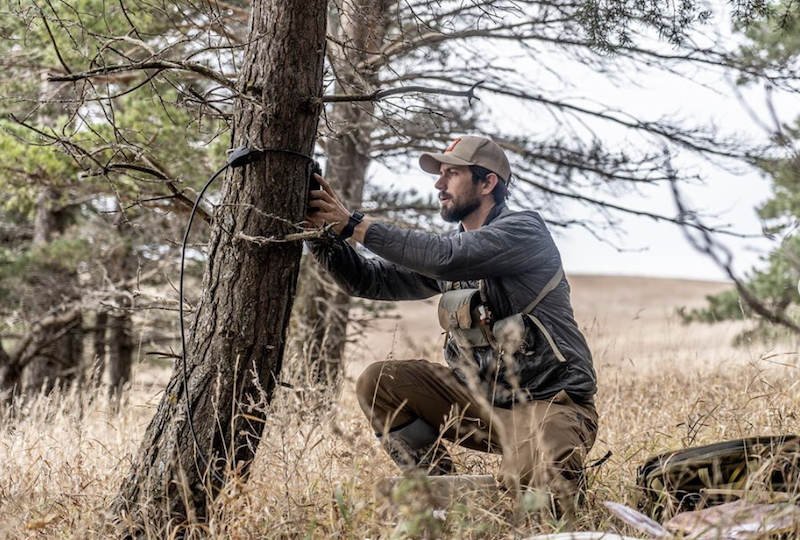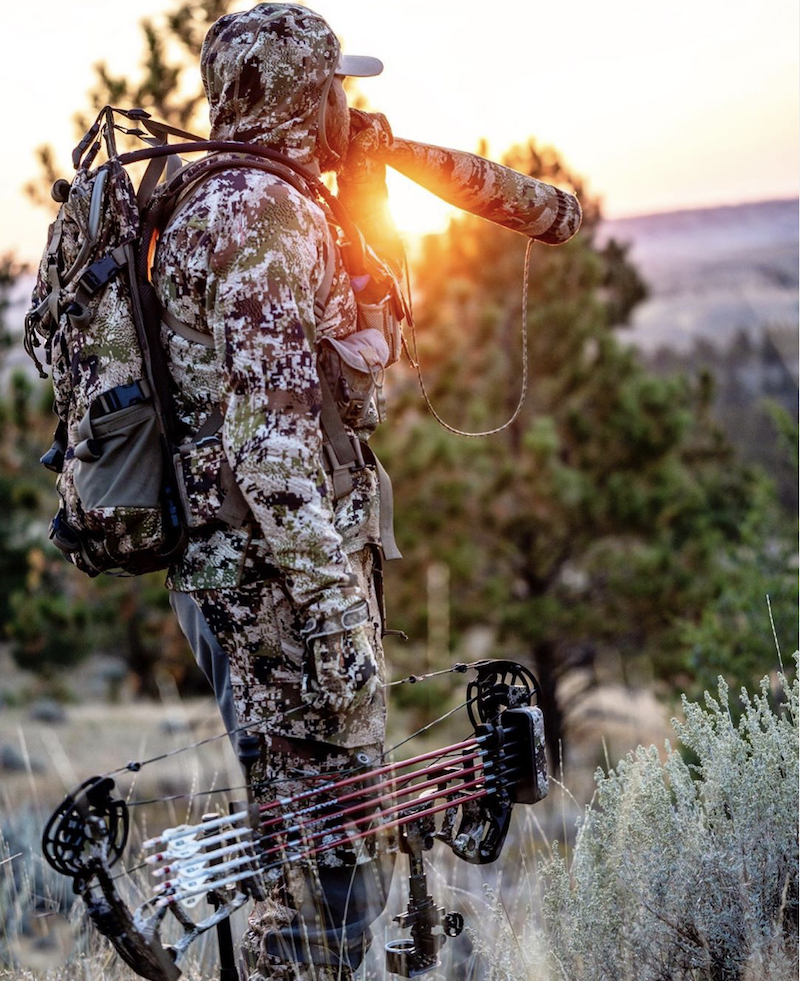Many folks claim few deer live on public lands, and that these properties are dangerous and overrun with thieves who steal your gear. Such accusations are usually false.
Sam Soholt, 32, from Fargo, North Dakota, said it’s unfortunate people believe such myths, and hopes more people give public lands a chance. Soholt estimates he bowhunts public land 98% to 99% of his time afield. He started focusing on public lands 10 years ago, and primarily bowhunts Kansas, Colorado, Nebraska, Minnesota, North Dakota and South Dakota.
You might have seen Soholt’s bus or van in the media or in your city. Photo Credit: Sam SoholtIf Soholt’s name sounds familiar, it might be because he received lots of media attention since 2017 after converting an old school bus into a mobile hunting vehicle. He travels the country to advocate for public lands and raise awareness about land access. That mission evolved into a 3.5-year pursuit. Soholt still travels the nation, but now drives a converted Chevy van to help people protect and conserve public lands.
Soholt spoke with Bowhunting 360 about those experiences, and why bowhunters shouldn’t believe the following four misconceptions about public lands:
Soholt hears this rumor the most. He said each public property has a different story. Although it’s easier for smaller tracts to get congested with hunters, not all of them do. And even if a property’s parking lot has five vehicles, bowhunters will likely find good places to hunt.
“If you’re willing to put in the effort, get up earlier, and walk farther than other hunters, or hunt different areas, you’ll get away from people,” Soholt said. “It’s not the zoo everyone probably imagines it to be.”
All lands, private or public, have productive and unproductive hunting areas. Either way, you must work hard to find the hotspots.
“The quality of hunting can be amazing (on public lands),” Soholt said. “It’s harder to find places of good quality, but they exist. Sometimes you’ll find places that are just as good as – if not better than – private land.”
Hunters in all 50 states must pass a hunter-education and safety course to get a license. Therefore, all hunters know and understand safety rules. Yes, accidents still happen, but they’re rare. In fact, they’re nearly nonexistent in bowhunting.
Shooting incidents are widely publicized, however, which makes people think hunting is dangerous. Soholt said hunters worry most about getting shot during gun seasons, but wearing blaze-orange clothing greatly reduces those odds. “For the most part, people follow the rules and do the right thing,” he said.
Conservation wardens also patrol public hunting lands, and enforce rules to help prevent accidents. “It’s not a free-for-all,” Soholt said.

Check your area’s regulations on setting up gear on public land before you hunt. Photo Credit: Sam Soholt
Most hunters are ethical and honorable. They respect wildlife, wild places, other hunters, and their property. Soholt has had one trail camera stolen the past 10 years on public lands, and blames himself for being careless when setting it up.
“It was my fault,” he said. “I set it up without a lock too close to a parking area. I believe it wasn’t a hunter who took it, but someone walking their dog.”
Soholt said most hunters mind their own business and don’t take someone else’s stuff. He worries more about someone hunting from his treestand than stealing it. Regardless, he urges hunters to take precautions and use locks. Also check the state’s regulations because some forbid or restrict blinds, treestands and trailcams on public lands.
Bowhunting public lands can be challenging, but Soholt said that also makes it worthwhile. “It’s a never-ending puzzle,” he said. Soholt enjoys studying maps of big tracts to identify potential hotspots. He also uses digital databases and mapping software on his smartphone and computer, and then goes to the field to confirm or deny his findings. He also pushes himself to walk farther and find spots others don’t hunt. That effort often produces promising and rewarding hunts.

Trust yourself to make safe decisions and do your research before hunting on public land. Photo Credit: Sam Soholt
Soholt doesn’t know how public-land put-downs get started or spread, but he encourages bowhunters not to believe everything they hear. “(Hunters) tend to have a very short memory on good hunts and a long memory on bad hunts,” he said.
Soholt also encourages bowhunters to disregard negative reports about public lands. Instead, make your own conclusions about each public property.
“Don’t knock it until you try it,” Soholt said. “People need to spend time out there, especially because (public lands) are becoming more important since private-land access isn’t as easy to get as it used to be.”
Soholt also reminds bowhunters that they help restore habitat, train hunters, study wildlife, improve access, and fund conservation by buying licenses and paying federal excise taxes on archery gear through the Pittman-Robertson Federal Aid in Wildlife Restoration Act. Click here to learn more about this process.
“We own all public lands,” Soholt said. “We don’t manage it ourselves, but we’re paying for it with our taxes, so you might as well spend time in the woods on land you’re paying for.”
Still on the fence? Here are five reasons to hunt public land.